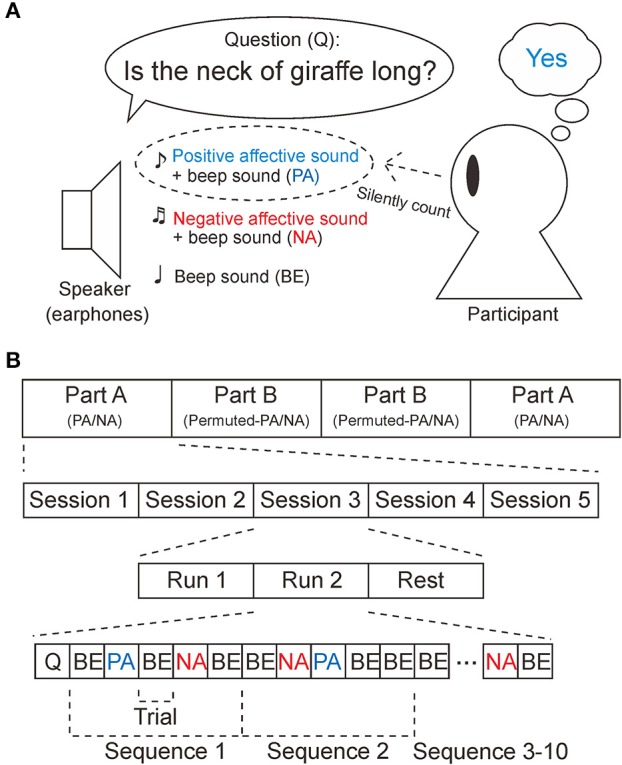Figure 1.

Task and experimental design. (A) Participants were asked to perform the oddball task in response to the sounds played through the earphones. First, a question to be answered “yes” or “no” was provided. If the answer was “yes,” the participants counted the positive affective sounds (PA). If the answer was “no,” the participants counted the negative affective sounds (NA). Note that the PA stimuli and NA stimuli were mixed with a 1,000 Hz sinusoidal waveform (beep sound). In the control experiment, PA and NA were replaced by permuted-PA and permuted-NA, respectively. (B) This experiment consisted of four parts (part A × 2, part B × 2), five sessions, and two runs. Part B was designed as a control experiment. In part A, PA, NA, and beep sounds (BE) were provided, while permuted-PA, permuted-NA, and B were provided in part B. Participants were asked to rest between sessions, At the beginning of a run, a yes/no question (Q) was provided. EEG measurements were taken during the tasks for PA, NA, permuted-PA, and permuted-NA.
